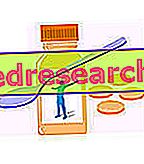
What is Crixivan?
Crixivan is a medicine containing the active substance indinavir. It is available as white capsules (100, 200, 333 and 400 mg).
What is Crixivan used for?
Crixivan is an antiviral drug. It is indicated in combination with other antiviral medicines to treat adults, adolescents and children of four years of age or older with human immunodeficiency virus type 1 (HIV-1) infection, a virus that causes acquired immune deficiency syndrome (AIDS). For adolescents and children, the benefits of Crixivan therapy should be carefully considered in view of the increased risk of nephrolithiasis (kidney stones).
The medicine can only be obtained with a prescription.
How is Crixivan used?
Crixivan should be administered by physicians experienced in the treatment of HIV infection. Crixivan should be used in combination with other antiviral medicines. The standard dose for adults is 800 mg every eight hours. As for children, the dose depends on the body surface (calculated based on the weight and height of the child). The capsules should be swallowed whole on an empty stomach, with water, one hour before or two hours after meals. Alternatively, Crixivan can be given with a light, low-fat meal.
In adults, Crixivan can be taken at a dose of 400 mg twice a day if each dose is taken with 100 mg ritonavir (another antiviral medicine) with or without food, in combination with other antiviral medicines. The use of Crixivan with ritonavir is based on limited evidence. The dose of Crixivan should be adequate in patients taking other medicines or having liver (liver) problems. To avoid the risk of developing kidney stones, patients need to drink a lot (at least 1.5 liters of fluid per day in the case of adults).
How does Crixivan work?
The active substance in Crixivan, indinavir, is a protease inhibitor. It blocks an enzyme called protease that is involved in the reproduction of HIV. If the enzyme is blocked, the virus is unable to reproduce normally and the infection is slowed down. Taken in combination with other antiviral drugs, Crixivan reduces the amount of HIV in the blood and keeps it at a low level.
Crixivan does not cure HIV infection or AIDS, but it may delay the damage to the immune system and the development of infections and diseases associated with AIDS.
Ritonavir is another protease inhibitor used as a "booster". It slows the rate of metabolism of indinavir, increasing the levels of indinavir in the blood. This allows a lower dose of indinavir to be used for the same antiviral effect.
What studies have been carried out on Crixivan?
The efficacy of Crixivan taken without ritonavir has been studied in three studies involving 524 HIV-infected patients. The first study compared the effects of Crixivan with those of zidovudine (another antiviral drug) and a combination of both medicines. The other two studies compared Crixivan taken with zidovudine and didanosine or lamivudine (other antiviral drugs) with Crixivan alone and in combination with zidovudine and didanosine or lamivudine. Crixivan, taken in combination with stavudine and lamivudine (other antiviral medicines), has also been studied in 41 children aged between four and 15 years. The main measure of effectiveness was the level of HIV in the patients' blood (viral load) at 24 weeks after treatment.
The company also presented the results of four studies from the scientific literature that examined the effects of taking Crixivan in combination with ritonavir. One study involved 20 patients already taking Crixivan without ritonavir and three other studies involving 123 patients who had never been treated for HIV infection before.
What benefit has Crixivan shown during the studies?
Crixivan, taken in combination with other antiviral medicines but not with ritonavir, was more effective than the comparator medicines in reducing the viral load. In the first study, a higher number of patients taking Crixivan with zidovudine had a 99% reduction in viral load at 24 weeks, compared to those who had taken Crixivan alone. In the second study, 53% of patients who took Crixivan with two other antiviral medicines had a reduction in viral load of at least 99% compared to 20% of those who had taken Crixivan alone or zidovudine and didanosine. The third study gave similar results: 90% of those who took three medicines, including Crixivan, had a viral load of less than 500 copies / ml, compared to 43% of those who had taken Crixivan alone and 0% of those who had taken two antiviral medicines. About half of the children included in the studies had a viral load of less than 50 copies / ml after 24 weeks of taking Crixivan with two other antiviral medicines.
Studies with Crixivan taken with ritonavir revealed that the combination produced blood levels of indinavir similar to those of Crixivan taken without ritonavir. The combination proved to be effective up to a maximum of two years.
What is the risk associated with Crixivan?
The most common side effects with Crixivan (seen in more than 1 patient in 10) are headache, dizziness, nausea, vomiting, diarrhea, dyspepsia (heartburn), rash, dry skin, asthenia (weakness), fatigue, alteration of taste (an unusual taste in the mouth) and abdominal pains. Nephrolithiasis has been found to be very common in children from three years of age. For the full list of all side effects reported with Crixivan, see the Package Leaflet.
Crixivan should not be used by people who may be hypersensitive (allergic) to indinavir or any of the other ingredients (components). Crixivan should not be used in patients who are treated with any of the following drugs:
- medicines that are metabolised similarly to Crixivan and that are harmful to high blood levels;
- amiodarone (to correct an irregular heartbeat);
- terfenadine, astemizole (commonly used to treat allergy symptoms - such medicines are available without a prescription);
- cisapride (to treat certain stomach problems);
- alprazolam, triazolam, midazolam taken orally (to treat anxiety or difficulty sleeping);
- pimozide (to treat mental illnesses);
- ergotine derivatives (to treat migraines)
- simvastatin, lovastatin (to lower blood cholesterol levels)
- rifampicin (for the treatment of tuberculosis);
- St. John's wort (herbal medicine used in the treatment of depression).
Care should be taken if Crixivan is taken at the same time as other medicines. For more information, see the package leaflet.
Additional restrictions should be observed when Crixivan is taken with ritonavir. See the complete list in the ritonavir package leaflet.
As with other anti-HIV drugs, patients receiving Crixivan may also be at risk of lipodystrophy (changes in the distribution of body fat), osteonecrosis (death of bone tissue) or immune reactivation syndrome (symptoms of infections caused by system reactivation). immune). Patients with liver problems (including hepatitis B or C infection) may be at an increased risk of developing liver damage when treated with Crixivan.
Why has Crixivan been approved?
The Committee for Medicinal Products for Human Use (CHMP) decided that Crixivan's benefits, in combination with antiretroviral nucleoside analogues, outweigh its risks in the treatment of adults, adolescents and children over four years of age with HIV infection 1. The Committee recommended that Crixivan be given marketing authorization.
Originally Crixivan had been authorized "in exceptional circumstances" because, for scientific reasons, the data available at the time of approval were limited. As the company provided the additional information requested, the condition referring to "exceptional circumstances" was removed on 8 April 1998.
More information on Crixivan:
On 4 October 1996, the European Commission granted a marketing authorization valid for Crixivan, valid throughout the European Union, to Merck Sharp & Dohme Limited. This authorization was renewed on 4 October 2001 and 4 October 2006.
The full EPAR for Crixivan can be found here.
Last update of this summary: 06-2008.



